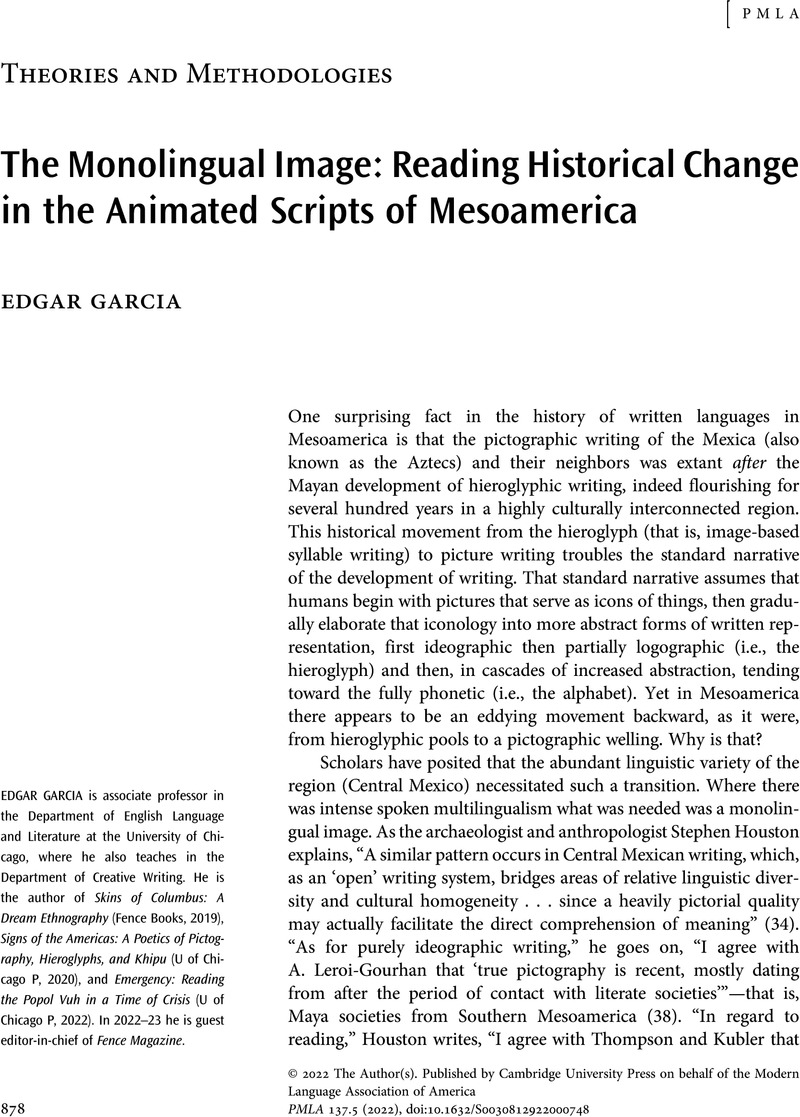No CrossRef data available.
Article contents
The Monolingual Image: Reading Historical Change in the Animated Scripts of Mesoamerica
Published online by Cambridge University Press: 14 December 2022
Abstract
An abstract is not available for this content so a preview has been provided. Please use the Get access link above for information on how to access this content.

- Type
- Theories and Methodologies
- Information
- Copyright
- Copyright © 2022 The Author(s). Published by Cambridge University Press on behalf of the Modern Language Association of America
References
Works Cited
Didi-Huberman, Georges. Atlas; or, The Anxious Gay Science. Translated by Lillis, Shane, U of Chicago P, 2018.CrossRefGoogle Scholar
Garcia, Edgar. Signs of the Americas: A Poetics of Pictography, Hieroglyphs, and Khipu. U of Chicago P, 2020.CrossRefGoogle Scholar
Houston, Stephen. “Literacy among the Pre-Columbian Maya: A Comparative Perspective.” Writing without Words: Alternative Literacies in Mesoamerica and the Andes, edited by Boone, Elizabeth Hill and Mignolo, Walter D., Duke UP, 1994, pp. 27–49.Google Scholar
Mitchell, W. J. T. Picture Theory: Essays on Verbal and Visual Representation. U of Chicago P, 1995.Google Scholar
Montgomery, John. “CHAN/KAN.” Dictionary of Maya Hieroglyphs, Foundation for the Advancement of Mesoamerican Studies, research.famsi.org/montgomery_dictionary/mt_entry.php?id=1327&lsearch=ch&search=CHAN/KAN.Google Scholar
Onyx Equinox. Created by Sofia Alexander, Crunchy Onigiri, 2020, www.crunchyroll.com/onyx-equinox.Google Scholar
Stuart, David. The Inscriptions from Temple XIX at Palenque. Pre-Columbian Art Research Institute, 2005.Google Scholar
Whittaker, Gordon. Deciphering Aztec Hieroglyphs: A Guide to Nahuatl Writing. U of California P, 2021.Google Scholar


